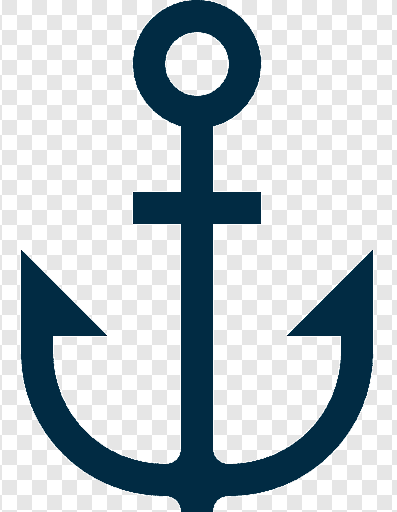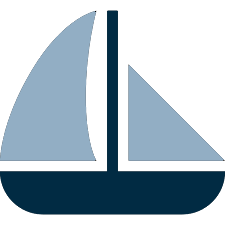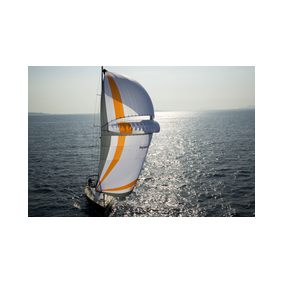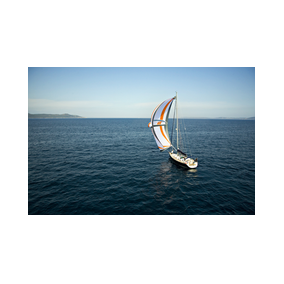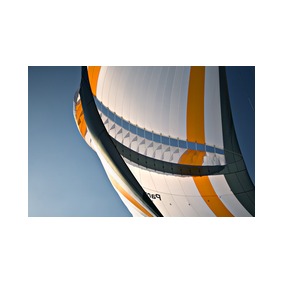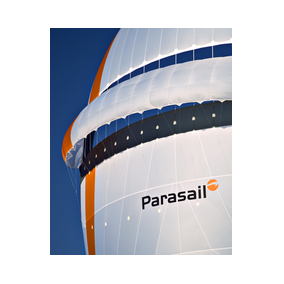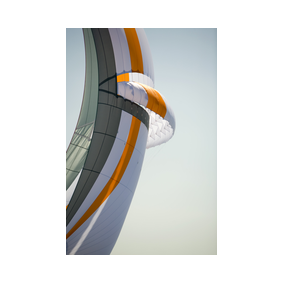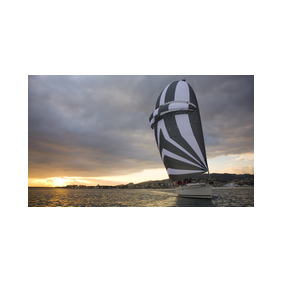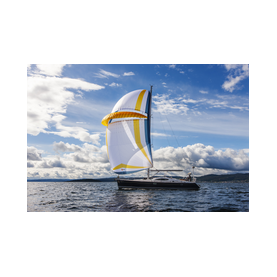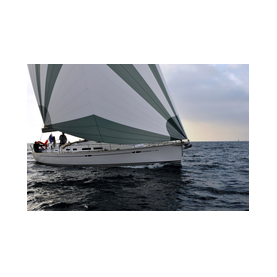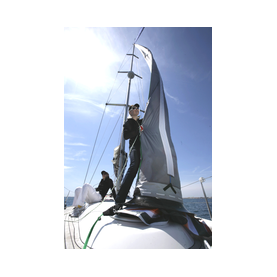
Let Your Passion Fly
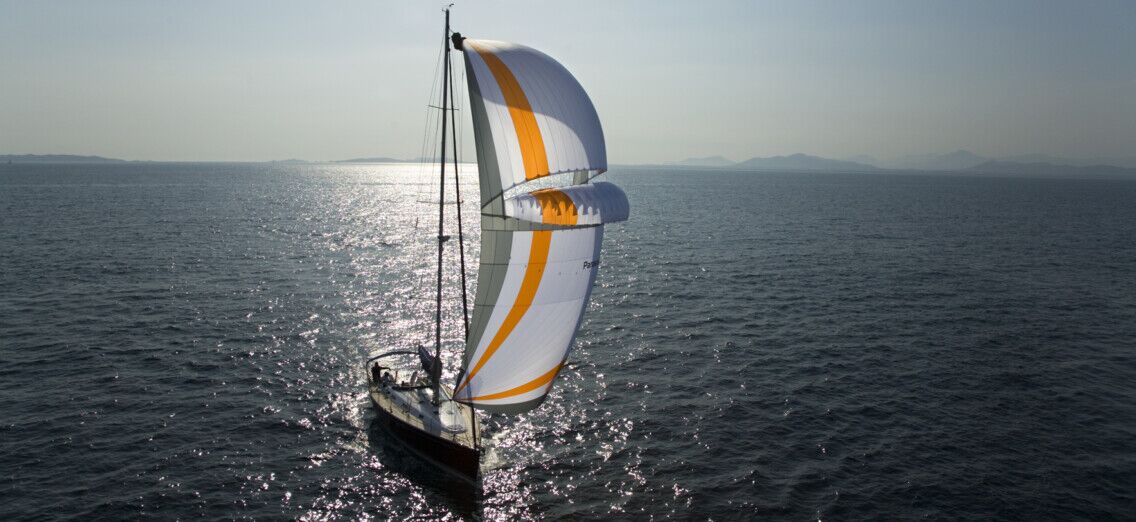
Parasail is the light and easy spinnaker
- More safe
- Under-control
- Easy handle
- Quick and safe jibs
- From full downwind to large upwind
Developed as a variant of the Parasailor, the Parasail is a great light wind performer. With very little tendency to roll, it is ideal for small crews. Use of the spinnaker pole is possible but not necessary.
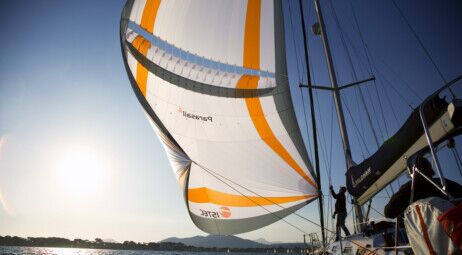
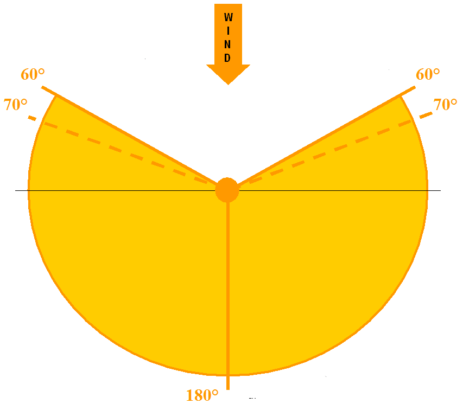
No pole required
There are several ways of rigging the Parasail. While it is perfectly fine to use the spinnaker pole just like with a regular spinnaker, it is definitely not necessary to do that. The spreading moment of the wing suffices to conveniently use the Parasail without spinnaker a pole.
Good from 60-70° to 180° AWA
Two sails in one! The Parasail works from 60-70° to 180° apparent wind angle (AWA), that is, its covers the domains of both symmetric and asymmetric spinnakers taken together.
Impressive wind speed range
Two sails in one! The Parasail works from 60-70° to 180° apparent wind angle (AWA), that is, its covers the domains of both symmetric and asymmetric spinnakers taken together.
Impressive wind speed range
Parasail is already in performance with just 4 knots of wind but is able to reach very high speed limits forbidden to a common spi or gennaker (lower high limit compared Parasailor).
Less load on the bow
With a regular spinnaker, the long lever of the mast puts significant load on the bow. In contrast, the wing of the Parasail creates lift (less than the Parasailor wing) that works in the opposite direction, thus reducing the load on the bow.

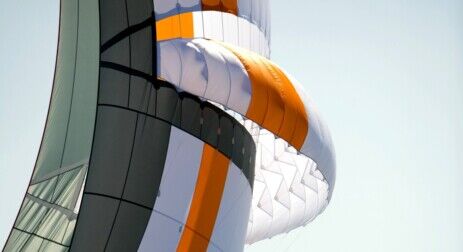
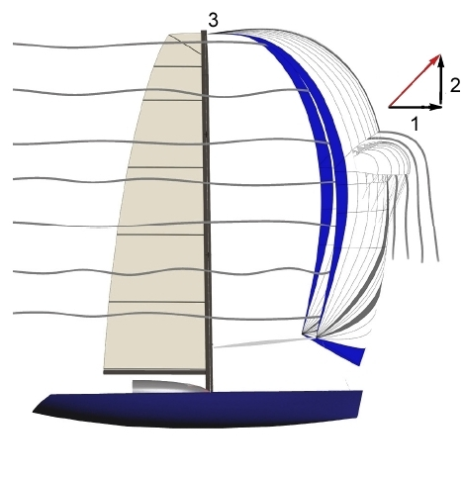
Works well on autopilot
A match made in heaven: the Parasail on autopilot. It's great to see how well they go together. The Parasail, on the one hand, with its great self-trimming characteristics easily copes with the steering of the autopilot. On the other hand, the autopilot does not have to intervene much, as the Parasail has almost no tendency to roll.
Highly durable
Each Parasail is a highly durable product. Already its structure lets it cope with hard gusts much better than regular spinnakers (less than Parasailor). The horizontal opening is a true safety vent, allowing a sudden and strong increase in air pressure to exit the sail in a controlled manner. Furthermore, the multiply and double-stitched clews as well as the webbing and dacron tape reinforced leeches make the Parasail a tough downwind sail.
How the wing works
A tailwind fills the sail and propels the yacht forward (advance). Part of the pressure escapes through the opening in the sail behind which the wing has been fitted in such a way that the air flows past above and below it.
Thanks to the shape of the wing and the angle at which the air flows towards it (with the angle optimised for efficiency), the air on the surface of the wing accelerates faster than the air beneath it. Low pressure then forms on the surface which literally sucks the wing upwards and stabilises it (lift).
The wing lift achieves two essentials effects: Firstly the pressure on the bow is minimised. And secondly the propulsion is increased because the wing's optimised angle of efficiency is designed so that the loss of propulsion caused by the opening is completely compensated for.
Parsail in action
Contact us:
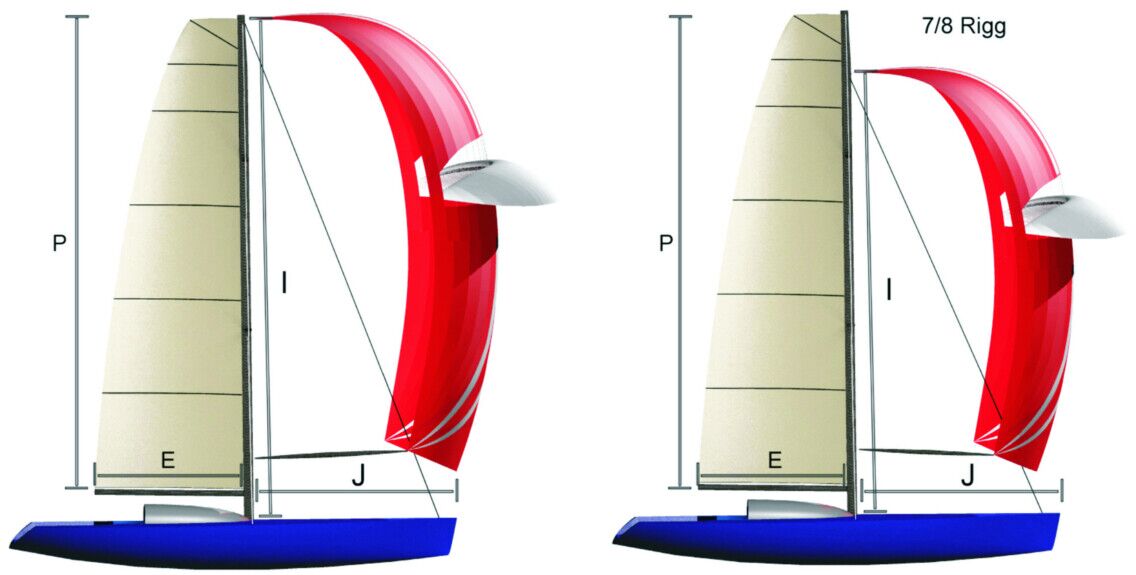
I" and "J" measures are not always necessary if you will give us type and model of your yacht. Anyway, if you would be able to give us those measures we will be able to make a double check on them
Related products:


